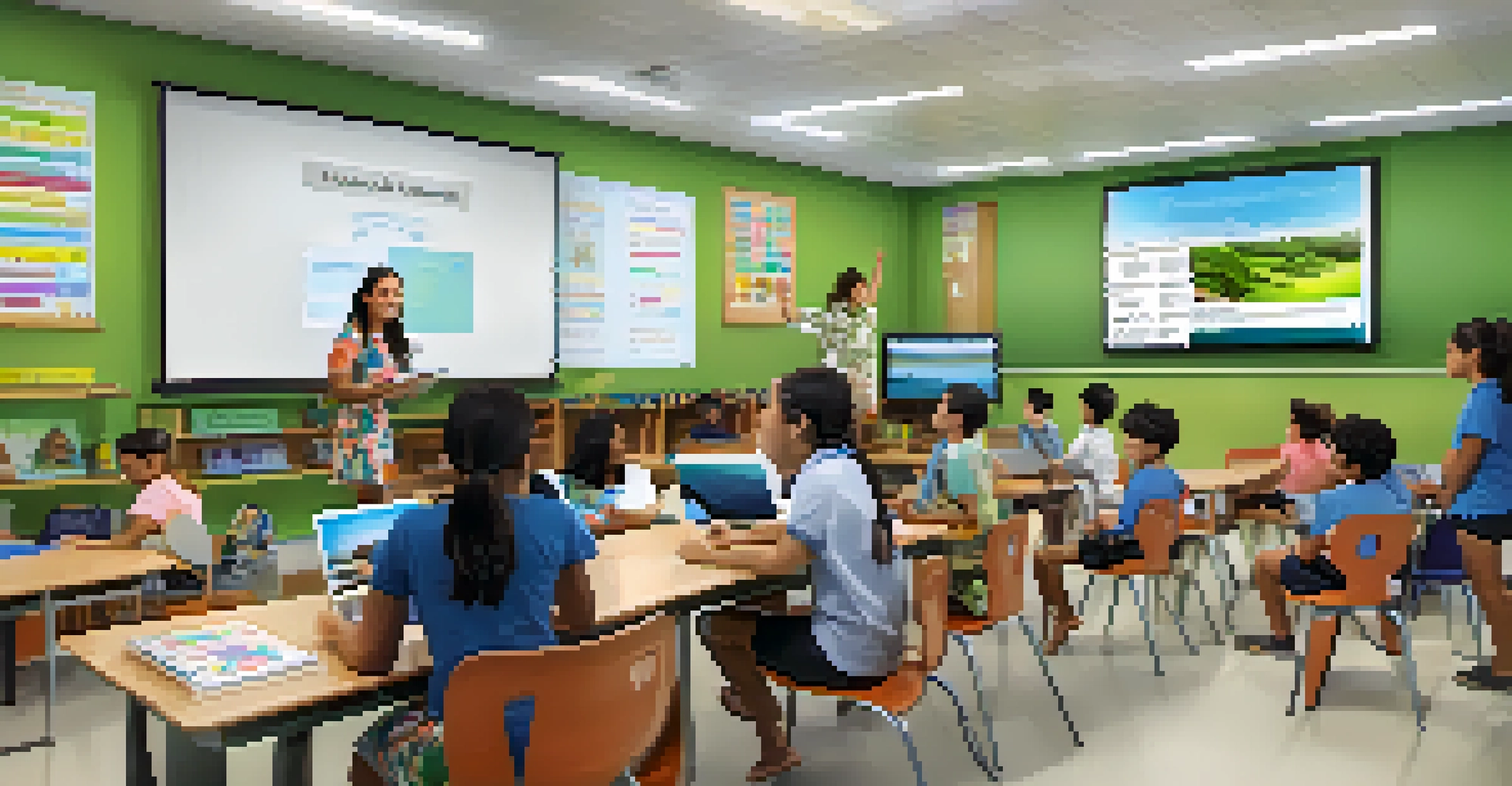Hawaiian Language Schools: Nurturing Future Generations of Speakers

The Importance of Hawaiian Language Preservation
Hawaiian language, or 'Ōlelo Hawai'i, is more than just a means of communication; it's a vital part of Hawaiian culture and identity. With its unique sounds and structures, the language carries traditions, stories, and a sense of place that connects people to their heritage. Sadly, the Hawaiian language faced significant decline due to historical suppression, making preservation efforts crucial.
A language is something infinitely greater than grammar and philology. It is a poetic testament to the history of a race and the thoughts of its people.
Language schools play an essential role in revitalizing 'Ōlelo Hawai'i by providing structured learning environments. By immersing students in the language, these schools help instill a sense of pride and belonging among learners. This is especially important for young generations who may feel distanced from their roots.
Through engaging teaching methods and cultural activities, Hawaiian language schools nurture a love for the language. Students gain not only linguistic skills but also an appreciation for the rich history and values embedded within 'Ōlelo Hawai'i, ensuring that they carry this legacy forward.
Diverse Learning Environments in Hawaiian Language Schools
Hawaiian language schools vary widely in their approach, catering to different age groups and learning styles. From early childhood education to adult classes, these institutions create inclusive spaces where everyone can learn. Some schools even offer immersion programs, allowing students to experience the language in everyday contexts.

Beyond traditional classroom settings, many schools incorporate cultural practices like hula, music, and storytelling into their curriculum. These activities not only make learning enjoyable but also deepen students' understanding of the language's significance. By participating in cultural traditions, learners can see firsthand how 'Ōlelo Hawai'i connects to their identity.
Preserving Hawaiian Language is Vital
Efforts to preserve 'Ōlelo Hawai'i are crucial for maintaining Hawaiian culture and identity.
Additionally, some schools collaborate with community members and elders, fostering intergenerational learning. This exchange of knowledge enriches the educational experience, making it more relevant and impactful. By involving the community, schools ensure that the language's growth is a collective effort.
Challenges Facing Hawaiian Language Education
Despite the positive strides made by Hawaiian language schools, challenges remain. One significant issue is the lack of resources and funding, which can limit program offerings and teacher training. Many schools rely on grants and donations to sustain their operations, making financial stability a constant concern.
Language is the road map of a culture. It tells you where its people come from and where they are going.
Another challenge is the perception of the Hawaiian language as a 'minority' language. This can affect enrollment numbers, as some families may prioritize mainstream education over cultural immersion. Raising awareness about the benefits of bilingualism and cultural education is essential to combat this mindset.
Moreover, attracting qualified teachers who are fluent in 'Ōlelo Hawai'i can be difficult. The demand for proficient educators often exceeds the supply, which can impact the quality of instruction. Continuous support for teacher training and development is crucial for the longevity of these programs.
Success Stories from Hawaiian Language Schools
Many Hawaiian language schools have seen remarkable success, with students achieving fluency and confidence in their language skills. Graduates often go on to become community leaders, educators, and advocates for Hawaiian culture. Their journeys serve as inspiration for current students, showcasing the positive impact of language education.
One notable example is the Hawaiian Language Immersion Program, which has produced a generation of fluent speakers who actively contribute to cultural preservation. These graduates often return to their schools as teachers or mentors, creating a cycle of knowledge transfer. Their involvement demonstrates the power of community and the importance of nurturing future leaders.
Cultural Engagement Enhances Learning
Incorporating cultural practices into Hawaiian language education deepens students' connection to their heritage.
Moreover, students from these schools often engage in cultural initiatives, such as participating in legislative efforts to promote the use of 'Ōlelo Hawai'i in public spaces. Their advocacy highlights the relevance of the language in contemporary society and encourages others to embrace their heritage.
Role of Technology in Hawaiian Language Education
In recent years, technology has become an invaluable tool for Hawaiian language education. Online resources, apps, and social media platforms provide students with new ways to engage with 'Ōlelo Hawai'i. These tools can enhance traditional learning methods, making language acquisition more interactive and accessible.
Many language schools utilize digital platforms to offer online classes, reaching students who may not have access to in-person instruction. This flexibility can be especially beneficial for those living outside of Hawaii or in remote areas. As a result, the language can continue to thrive, regardless of geographical barriers.
Furthermore, social media has fostered a vibrant online community of Hawaiian language learners and speakers. By sharing resources, stories, and experiences, individuals can connect with one another, creating a supportive network. This sense of community reinforces the idea that language learning is a shared journey.
Community Involvement and Support for Schools
Community involvement is essential for the success of Hawaiian language schools. Local residents often volunteer their time and resources to support educational programs, from fundraising efforts to providing mentorship. This commitment reinforces the idea that preserving 'Ōlelo Hawai'i is a collective responsibility.
Schools frequently host events that invite families and community members to participate, fostering a sense of belonging. These gatherings often feature cultural performances, language workshops, and opportunities to connect with educators. By engaging the community, schools build a strong foundation for ongoing support.
Community Support Fuels Success
Active community involvement is essential for the sustainability and growth of Hawaiian language schools.
Additionally, partnerships with local organizations and businesses can enhance educational offerings. Collaborations can provide additional resources, such as guest speakers or funding for cultural projects. When the community rallies behind these schools, it creates a powerful force for language revitalization.
Looking Ahead: The Future of Hawaiian Language Schools
As Hawaiian language schools continue to evolve, their impact on future generations becomes increasingly important. By fostering a love for 'Ōlelo Hawai'i, these institutions help ensure that the language and culture remain vibrant. The commitment to education and preservation is a testament to the resilience of the Hawaiian community.
Looking ahead, there is hope for continued growth and expansion of language programs, especially with increased awareness and support. Initiatives that promote Hawaiian language in schools, workplaces, and public spaces can contribute to a broader understanding of its significance. This collective effort can help shift perceptions and encourage more families to embrace language education.

Ultimately, the future of Hawaiian language schools is bright, thanks to passionate educators, supportive communities, and dedicated students. By nurturing the next generation of speakers, we can ensure that 'Ōlelo Hawai'i continues to thrive, enriching lives and connecting people to their heritage for years to come.